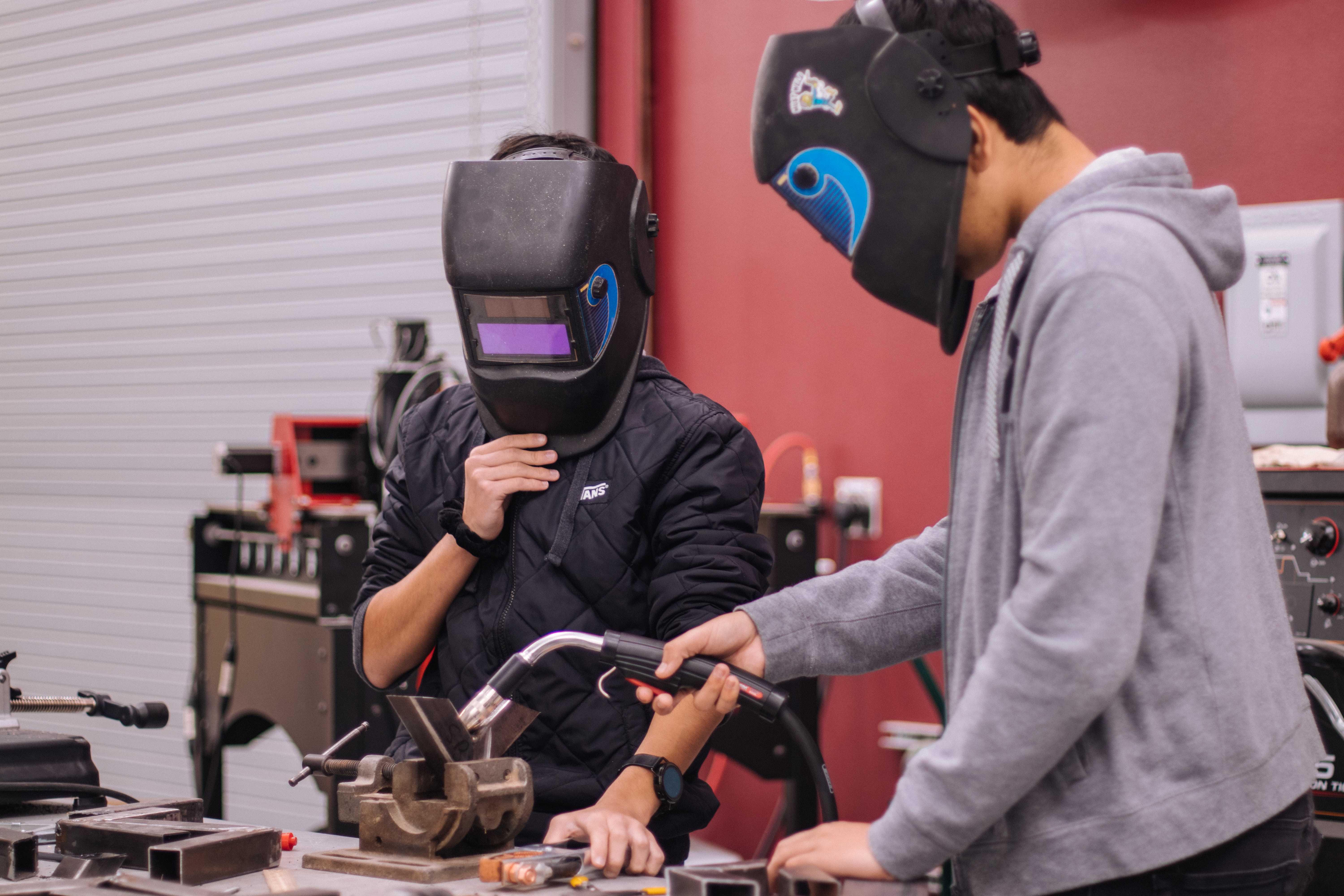Hazardous Work for Children
Photo Credit: Silvia Brazzoduro_Unsplash
According to the International Labor Organization (ILO), there are approximately 152 million children ages 5 to 17 engaged in child labor worldwide. Companies using child labor in their supply chains face significant legal, financial, and reputational consequences. It is critical for companies to conduct social compliance auditing to identify and address any instances of child labor in their supply chains.
This specialized guide can be used in conjunction with other audit guidance to support correct identification and remediation of child labor in global supply chains.
According to ILO Convention 182, hazardous work “shall be determined by national laws or regulations or by the competent authority, after consultation with the organizations of employers and workers concerned, taking into consideration relevant international standards...” (Article 4). As this suggests, forms of work identified as “hazardous” for children may vary from country to country. ILO Recommendation No. 190, which accompanies ILO Convention 182, gives additional guidance on identifying “hazardous work.” ILO Recommendation No. 190 states in Section II, Paragraph 3 that “[i]n determining the types of work referred to under Article 3(d) of the Convention [ILO Convention 182], and in identifying where they exist, consideration should be given, inter alia to:
No child under age 18 should be involved in the Worst Forms of Child Labor specified in ILO Convention 182 (see Step 3: Develop a Code of Conduct). Causes of child labor violations can include:
Impactt Limited’s Operational Procedures for Remediation of Child Labour in Industrial Contexts provides detailed guidance on both improving victim situations and preventing recurrence of child labor when found in a manufacturing environment, including:


Since 2011, the U.S.-based Fair Labor Association* (FLA) has been assessing working conditions at hazelnut farms in the Black Sea region of Türkiye, first as a special project commissioned by the multinational corporation Nestlé* and later as a collaboration between the FLA, Nestlé, and two of its Türkiye -based hazelnut suppliers, Balsu Gida* and Olam Progida.* Annually, the FLA sends a team of assessors to visit a sample of farms supplying hazelnuts to these companies. The presence of child labor has been a consistent finding both among local workers’ families and among the groups of migrant workers who travel to the region for the hazelnut harvest.
The United States is the leading importer of coffee, accounting for over 18 percent of total coffee imports in the world, with Brazil and Colombia as the top suppliers. But before that coffee reaches our cups, tens of millions of workers globally select, pick, and process the beans. Many of those workers are children toiling in the fields rather than learning in school. This project helps businesses establish systems to prevent, detect, and eliminate child labor and other forms of labor exploitation from their supply chains, and it is assembling a powerful coalition of coffee buyers to collectively incentivize suppliers into compliance.
Aligned with the U.S. Department of Labor’s Comply Chain tool, Verité developed a Socially Sustainable (S3T) toolkit consisting of 12 tools with inputs from a range of stakeholders to implement sustainable social compliance systems to mitigate labor rights violations. An expert committee and advisory council reviewed and validated the S3T, which helped the project determine the selection of tools to pilot in each country. Verité’s pilot projects also contribute to ongoing sectoral dialogues on critical issues facing the coffee sector:

Verité is building the capacity of coffee producers, agronomists, field technicians, certifiers, and monitors to identify and address labor issues in the coffee sector through a series of trainings that focus on increasing understanding of international standards and Mexican law; aiding in the identification of forced labor, child labor, and other labor abuses in the Mexican coffee sector; and identifying and remediating root causes of labor exploitation. The series of trainings also includes how to use the set of tools developed through the COFFEE Project to improve labor conditions in the coffee sector.
Verité is piloting innovative payment models to improve working conditions for coffee harvesters, including vulnerable women and Venezuelan migrants.
Verité is increasing understanding of recruitment dynamics and related risks in the Brazilian coffee sector. It is also providing coffee producers, traders, and roasters with tools and trainings to help identify and reduce these risks in their supply chains.
For more information, visit: Cooperation On Fair, Free, Equitable Employment (COFFEE) Project
To verify the age of workers, “employers should keep and make available to the competent authority registers or other documents indicating the names and ages or dates of birth, duly certified wherever possible, not only of children and young persons employed by them but also of those receiving vocational orientation or training in their undertakings.”
A medical examination prior to employment may help to indicate the person’s true age and verify physical aptitude for the work. Care should always be taken to respect the person’s right to privacy.
Cross-checking multiple written documents and affidavits can help identify false documentation.
Employers can hold interviews with employees and applicants who appear to be below the minimum age required for work to obtain further information.
School enrollment certificates can be a good source of information.
Local indicators may also be helpful in countries where the challenge is that the worker may not know the precise year in which they were born. For example, in some Asian countries, children do not know their precise birth year but know the animal year (Year of the Monkey, etc.). A person might know that their birth is related to some major historical event, such as independence or the start or end of a war, or a significant anniversary. Research local key events or means of marking time in the country of operation to help during interviews if you doubt a worker’s age.
Source: Excerpted from the ILO Helpdesk for Business, Q&As on Business and Child Labor.
(a) their age
(b) possible work experience
(c) if any workers are identified as being in a situation of hazardous work
In remote geographic locations and industries where production is largely dispersed and informal, some companies have pursued community-based child labor monitoring approaches as an alternative to formal auditing. This methodology has been tested in smallholder agricultural production.
Companies and multi-stakeholder groups have been grappling for years with the challenges of informal work and homework for children. In 2010, the Ethical Trading Initiative* published ETI Homeworker Guidelines for both retailers and suppliers. These guidelines and their supporting documents include tools such as a model policy on homework for retailers and suppliers, research guides for identifying homework in supply chains, mapping tools, and guidance on setting appropriate piece rates, since homeworkers are usually paid on a piece-rate basis.
Starting in 2019, as part of the Hidden Homeworkers Programme—a partnership between Traidcraft Exchange,* HomeNet South Asia,* and Homeworkers Worldwide,* with financial support from the EU—a Preventing Child Labour Toolkit was developed, including practical guidance on addressing issues of child labor in homebased crafts production. The project aims to extend multi-stakeholder transparency and traceability systems to the lower tiers in the garment sector to improve working conditions of child and adult homeworkers in India, Nepal, and Pakistan as part of the apparel and footwear supply chains.

Auditing has little utility unless the audit is conducted appropriately and the company is committed to using audit data to improve labor conditions. Audit data should be entered into a database system that allows for analysis of aggregate data over time on each supplier and worksite audited, each product line, each type of violation, compliance in distinct geographic zones, and other patterns.
Note: There are several challenges to maintaining an effective audit database, including processing data coming from a variety of different individual auditors, integrating the database with information systems that track other worker-driven social compliance program data, such as supplier lists, supplier training and capacity-building data, remediation, and independent verification information that integrates worker voice and union perspectives, and setting up clear processes for the use of data.
If violations are found at a worksite, there should be processes in place for tracking that supplier’s remediation. The team should be looking for patterns of violations in specific product lines, particular regions, violations related to supplier ownership or management, and other issues. When patterns are detected, the scheduling audits should shift toward those types of worksites that seem to pose greater risks. The team should also have checks in place to identify “outliers” and verify data accuracy.
Increasingly, companies are exploring other ways to gather information and monitor compliance beyond auditing, such as relying on the use of technology and through existing partnerships with the NGO community and other civil society organizations and the individuals affected.